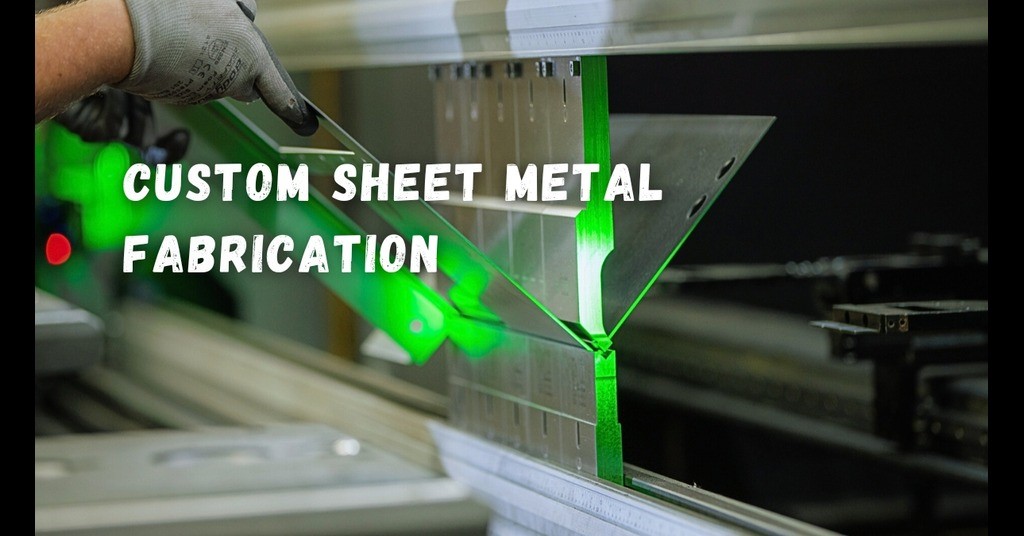
Custom sheet metal fabrication is a process of shaping various products from metal through the application of several methods. This technology is general, is applied in many fields, and is significant in many industries. This is why it is crucial to understand this process to enhance it. This guide introduces sheet metal working, the methods most frequently used, and their applications. You will understand the benefits of the process, which materials are suitable for the process, and various surface finishes. Further, custom sheet metal fabrication is typically a flexible and accurate process that involves cutting, bending, and welding. Some of the most frequently used materials are steel, aluminum, and brass; the selection depends on the application.
Painting and coating come out like a new surface and simultaneously enhance the life of the work done. It begins with design and planning; this may include Computer Aided Design (CAD). Laser, plasma, and waterjet cutting are cutting operations; bending alters the metal, and welding joins the parts. Quality control assists in ensuring that precision is achieved in the end product that is manufactured. These basics help make decisions since one is fully aware of what is happening. Take this information with you in your projects that involve sheet metal fabrication. It is a tool of great potentiality and strength. Stay updated, and just make the best out of it. Let’s walk through more details.
Sheet Metal Fabrication Defined?
Sheet metal machining involves converting flat metal into various shapes and sizes of the required parts. This process employs several methods, equipment, and procedures. It consists of processes such as bending, cutting, and joining metals. It is a dynamic and essential area from the beginning to the end. It is applied in many industries, and its application merges art and engineering in production.
How Is The Metal Fabrication Process Exactly Carried Out?
Sheet metal manufacturing entails either cutting or forming the metal. This is because various methods call for different tools, which in turn increases the expenses. Knowledge of these processes is crucial to design efficiency. Fabrication involves a metal sheet and a blueprint. The blueprint is usually a DXF or a CAD file and is used in cutting, forming, and finishing.
It can be a basic one that involves a single bend, or it can include laser cutting and edge bending. Together, these processes make the material cut, formed, finished, and joined.
Various Techniques Employed For Sheet Metal Fabrication
This section discusses the different methods used in sheet metal manufacturing, their uses, and advantages.
Sheet Metal Stamping
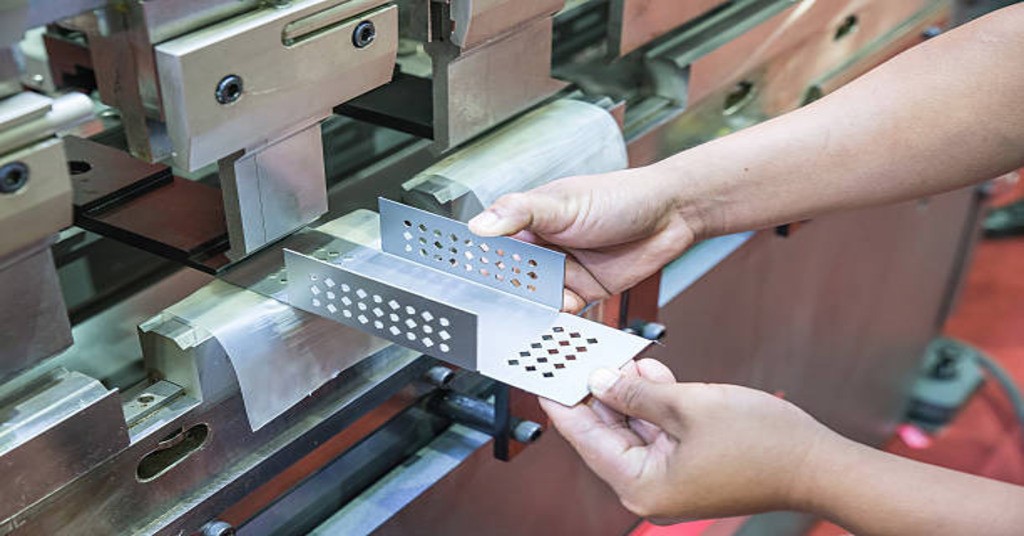
Sheet Metal Stamping
Metal stamping is an adaptable process that can accommodate various types of sheet metals, including galvanized alloys, brass, copper, aluminum, stainless steel, and others. It is useful in the production of automobile parts such as automobile doors, firewalls, hubcaps, and trunk lids. This makes it ideal for designing special features and designs for particular components, which is vital in producing intricate and high-performance metals. Another advantage of metal stamping is that it can create different shapes and forms depending on the industry in which it is to be used. Besides the punching of holes in sheet metal with a die, metal stamping also involves the process of making coins, manufacturing metal parts for automobiles, and fabrication of metal articles to order. It includes lifting sheet metal sections and creating raised letters, shapes, and images on the surface, similar to carpentry and marble carving.
Sheet Metal Cutting
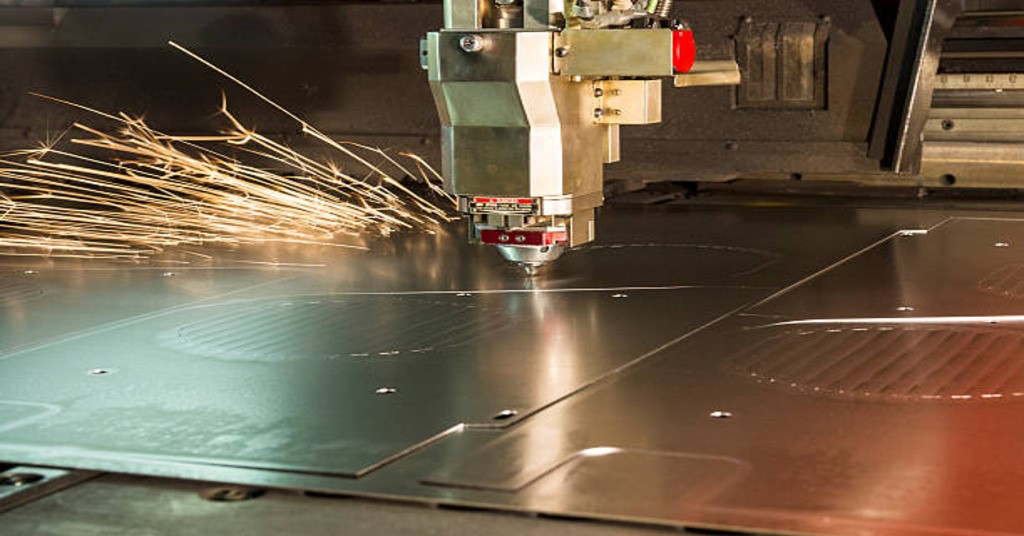
Sheet Metal Cutting
Machining is the first process in metalworking and is described as cutting metal with the help of sharp cutting tools. The following techniques are applied in the process depending on the project need and the thickness of the material; water jet cutting, torching, shearing, and sawing. This is important to get the final product in the predetermined size required by the market or the intended users. Shearing is economically applied to cut thin sheet metal pieces while sawing is applied in thicker metal as it is time-consuming. Both methods require applying certain tools that allow the correct and efficient cutting of metal workpieces in fabrication.
Sheet Metal Welding
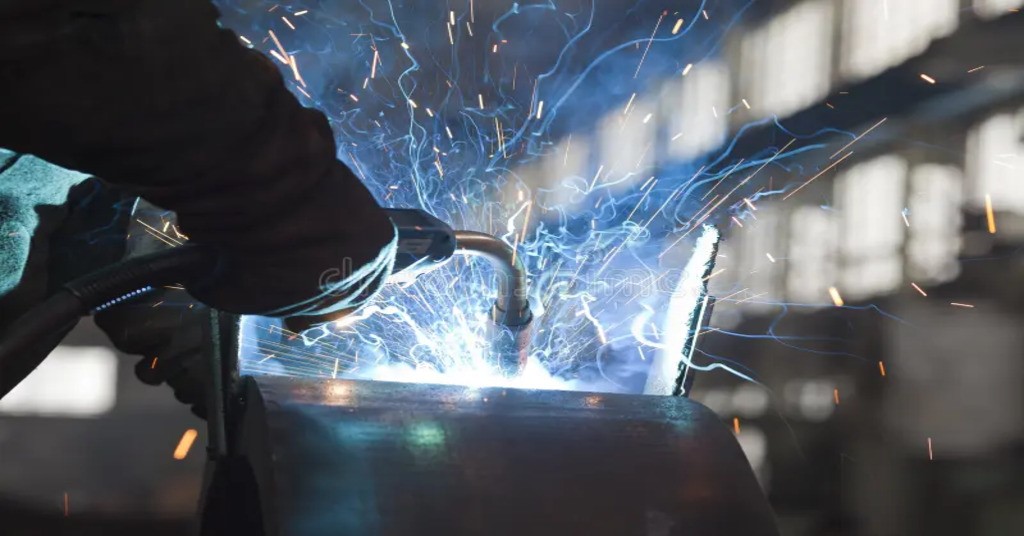
Sheet Metal Welding
Welding metal joins two or more sheet metal parts by heating them to a specific temperature and then applying fusion. Some types of welding include MIG welding, TIG welding, and laser welding, which are based on the type of equipment, type of metal, and thickness of the material. Welding helps connect various metal parts and is vital in constructing structures and mechanical systems. It is the professional operators who perform the sheet metal welding operations in such a manner that they get the desired quality welds as per the set standards and with the required uniformity. Preventive actions against risks are crucial when welding since they impact the welders and the parts to be welded.
Sheet Metal Bending
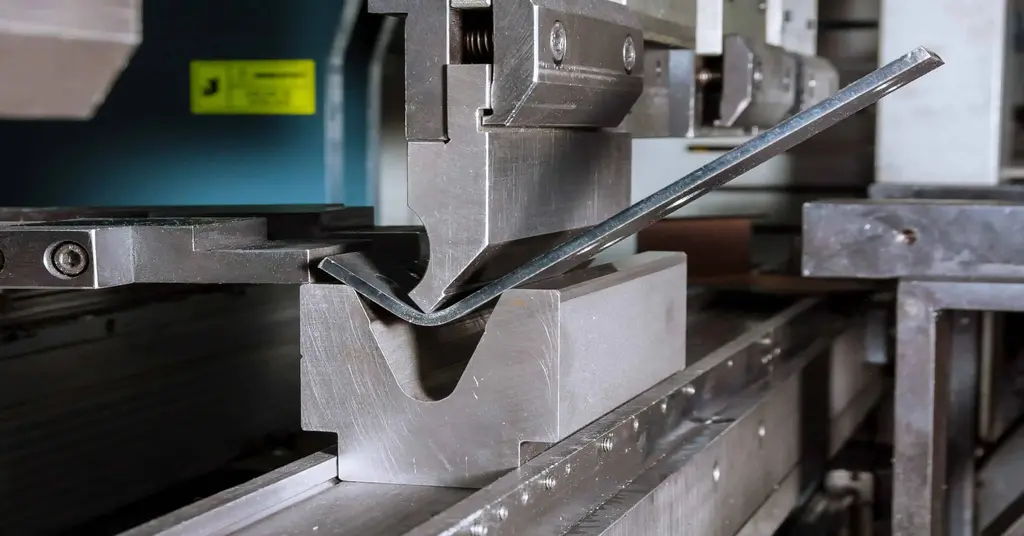
Sheet Metal Bending
Metal bending is among the most essential processes in sheet metal working, where sheet metal is shaped into different forms by bending tools like the press brake and rolling tools. It creates such structures as T corner and 90° angle which are vital in making metal parts of various requirements. Bending experts are also in a position to master the correct bend angles and bend sizes as provided by the design. Computer-controlled bending is employed to guarantee that the desired bend is made on the metal workpiece and duplicated. Precision is crucial during bending operations to achieve the right shapes and sizes of the product.
Sheet Metal Machining
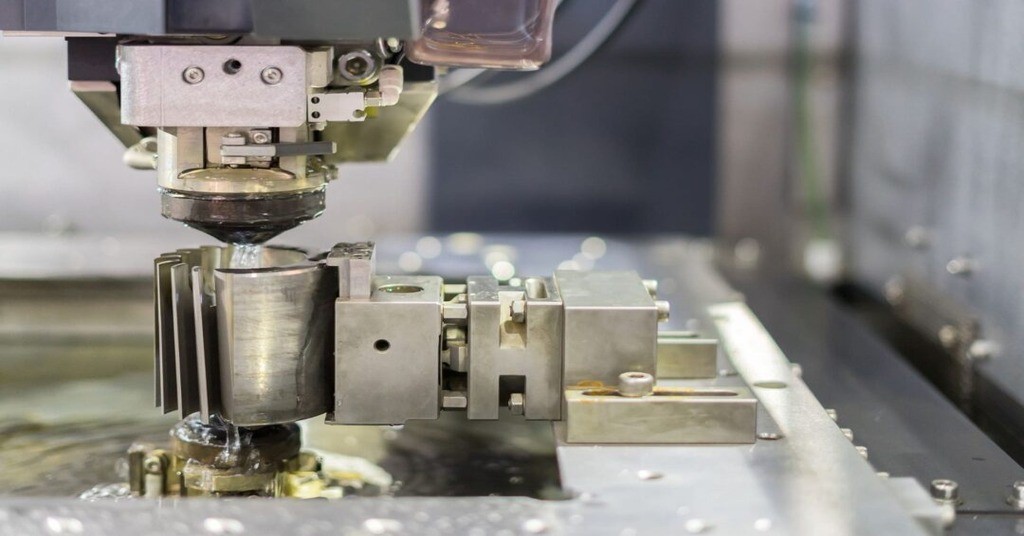
Sheet Metal Machining
Metal machining is a category of material removal manufacturing process that entails the cutting and reshaping of a workpiece to create a specific part. Among the usual techniques, there are turning and milling with the help of computer numerical control that is known for its accuracy and minor permissible deviations. CNC machining is used today because it is efficient, accurate, and consistent in the sheet metal machining process. CNC operators are knowledgeable in their specialization and control and operate CNC machines to choose the right tools and appropriate conditions for material removal. Machining is used to create parts with complex exterior and interior contours that match exact specifications.
Metal Punching
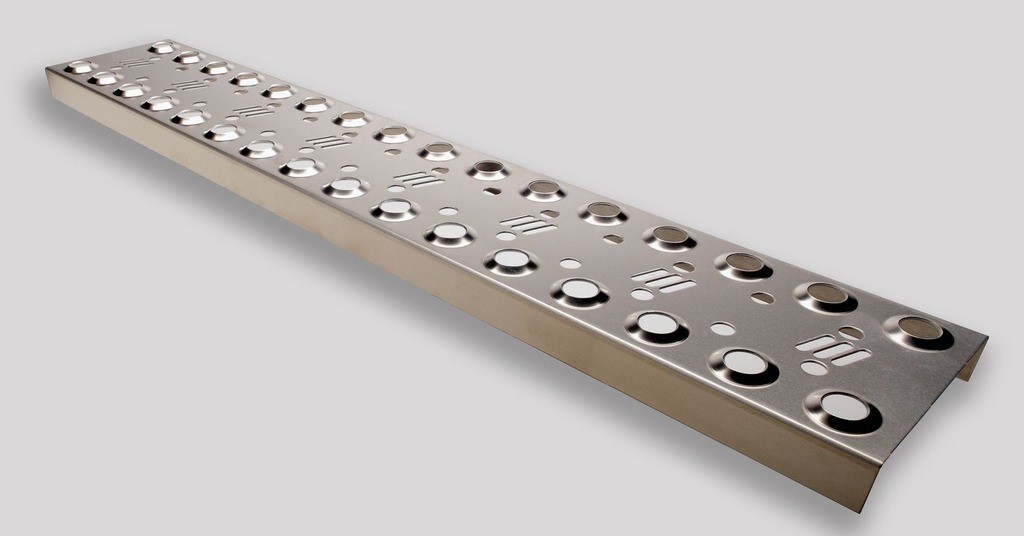
Sheet Metal Punched Part
Metal punching is a fabrication process that cuts, slices, and punches metals through a punch press as it goes through it. This general procedure entails the utilization of a punch and die set in shaping metal workpieces from various types of metals. Metal punching is one of the most efficient techniques, especially in high production, where fast and precise punching can be done. Punching tools are employed in automatic punching to attain high productivity with the bonus of uniformity in the outcomes. Competent operators start and regulate punching machines to change the punching technique depending on the type and thickness of the material; it is flexible in punching metal products. It is imperative to maintain punching equipment to perform its intended functions and have a longer life cycle.
Advantages of Sheet Metal:
Sheet metal can be characterized by a high degree of freedom in terms of functional requirements within the framework of design solutions and a large number of options that can be offered. Techniques like 3D printing are suitable when it comes to creating prototypes with short turnarounds, which is ideal for prototype development. In addition, processes like sheet metal assist in achieving a transition between the creation of the prototype and the manufacturing of the product in large quantities, establishing a sound production framework, and meeting the quantity demands effectively.
Sheet metal fabrication has a wide range of finishing methods, such as powder coating, painting, galvanizing, and plating, that offer looks and a product’s ability to withstand certain conditions in a particular climate. Moreover, the applications of sheet metal are not only in the type of material, which may be mild steel, stainless steel, aluminum, or brass, among others. It is unique and flexible, and it meets the various needs of the applications.
Sheet Metal Fabrication Applications
The process is commonly used in many industries, as can be observed from its use in home appliances, construction, and furniture, among others. Sheet metal can be classified into cold-rolled steel, hot-rolled steel, stainless steel, and aluminum depending on the need that is expected to be met by the metal.
Cold-rolled steel, which is characterized by a smooth surface and relatively low price, is used in home appliances, furniture, storage structures, and other structures. On the other hand, hot-rolled steel has better formability and is relatively cheaper. It is used in thicker sections and plates even though it undergoes dimensional changes during the cooling process.
Stainless steel sheets are most appropriate for rigorous use because they do not corrode easily and are very hard; therefore, they are applied in producing surgical instruments, cutleries, and industrial goods. Similarly, aluminum sheets are widely used due to the characteristics of anti-corrosion, lightweight, and high strength in transportation, electronics, and architecture industries.
Key Takeaways
In conclusion, this article has highlighted that outsourcing sheet metal fabrication services is a sound approach to producing some parts. The main benefit is the efficiency of creating light structures and elements with the help of various materials and technologies. Thus, it is pretty logical to think about the details of sheet metal service, how it can be used, and other design features that would allow for the best outcomes and reduced production time.
